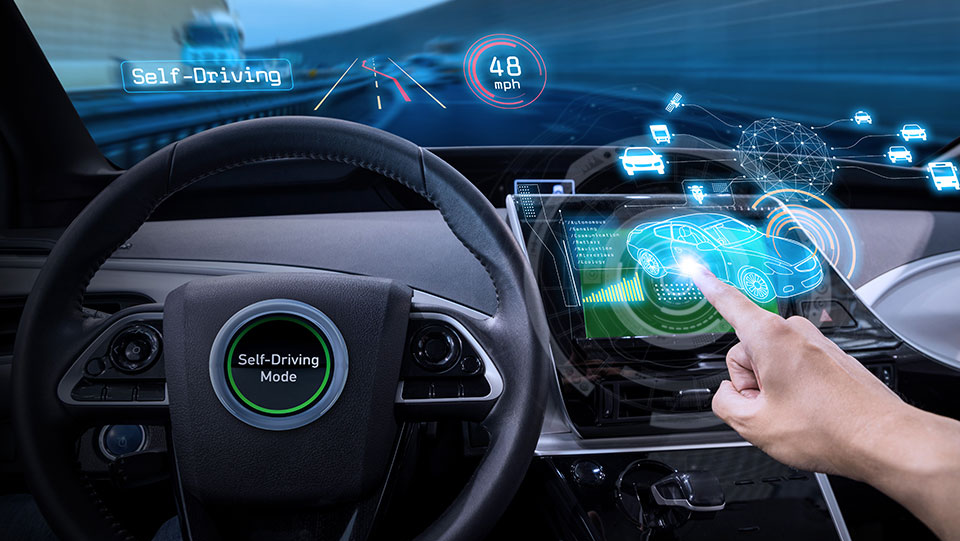5 Tips for Buying a New Car


It's appealing to buy a new car that looks great and is fun to drive, but it also pays to look beneath the surface for features that make your vehicle safe to drive and affordable to insure.
Car insurance costs are based, in part, on the model's safety history, the cost of vehicle repair or replacement, and the likelihood that the car will be stolen. Many insurers offer discounts for vehicles with features that reduce the risk of accidents and injuries.
Here are five tips to consider when shopping for a new car:
1. Find out the cost of insurance
Your insurance rates typically change when you acquire a new vehicle. Before you choose a model, the nonprofit Insurance Information Institute recommends that you ask your insurance rep how much it will cost to insure.1
If you choose a sporty model that attracts buyers who enjoy driving fast, it will likely cost more to insure. If the car you pick is very expensive, it will be costly to repair or replace, and that will drive up insurance costs. A model that's often targeted by car thieves may also cost more to insure.
2. Look for safety technology
One of the best things about buying a new car is all the new devices that have been developed in recent years to help drivers avoid accidents. Advanced safety features can include:
- Adaptive cruise control. It detects vehicles ahead and adjusts speed to maintain a safe following distance.
- Adaptive headlights. As you turn, these headlights adjust to light the road ahead.
- Automatic parking. Sensors detect obstacles and adjust steering to guide vehicles safely into parking spaces.
- Backup cameras. They help you see behind your car to avoid collisions.
- Forward collision warning. Radar, lasers or camera sensors detect when a crash is about to occur, alerting the driver. Some systems automatically apply the brakes.
3. Consider vehicle design and size
Design characteristics are important when choosing a new car. Larger and heavier vehicles typically sustain less damage in auto crashes than small cars. Some small utility vehicles and pickups are prone to rollover accidents.
In addition to considering size, look for cars that have “crashworthy" designs. These cars have strong “safety cages," the section of the vehicle that protects the occupants. Make sure that the front and rear ends are “crush zones" that can absorb the impact of crashes.
You can look up car safety rankings by using the Insurance Institute for Highway Safety's online safety rankings tool.
4. Get pre-approved for a car loan
Edmunds.com recommends that you get pre-approved for a car loan before you begin shopping for a new car.2 Check with several lenders to get the lowest interest rate. Once you have loan approval, you'll know how much you can afford to spend. You'll also have an interest rate you can use to compare with those offered by the new car dealer's financing. In some cases, the dealer may offer the best financing deal.
Before you begin shopping for a loan, gather documents to verify your income and the balances of any debts you may have.
5. Negotiate the best price
A good negotiator usually can get a better deal than someone who simply agrees to pay what the dealer is asking. Dealers may price their cars higher than the amount they actually expect to receive in preparation for negotiations.
If you take time to research prices online before you visit a dealership, you'll have a better idea of what a competitively priced car should cost. Often, the best time to buy is during end-of-the-year sales, when dealers need to make room for newer models, notes the Las Vegas Review-Journal.3
Negotiate the actual price of the car rather than the monthly payment. Focusing on payments makes it easy to lose sight of the full amount you'll be paying over time, says Autotrader.4
If you can't get the price you want, don't be afraid to walk away. Remember there's always another car.
Sources
1 http://www.iii.org/article/how-can-i-save-money-auto-insurance
2 http://www.edmunds.com/car-buying/10-steps-to-buying-a-new-car.html
3 http://www.reviewjournal.com/business/money/20-secrets-getting-the-best-deal-new-car
4 http://www.autotrader.com/car-shopping/buying-a-car-why-you-shouldnt-focus-on-the-monthly-payment-242019



